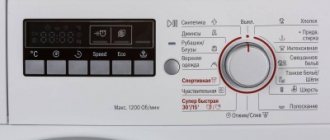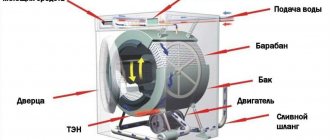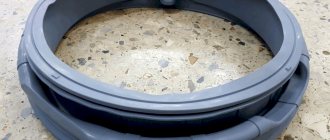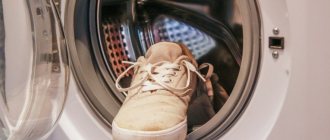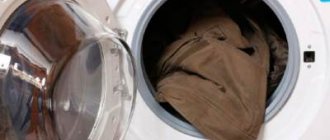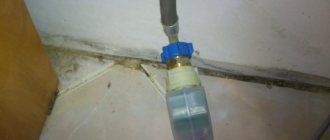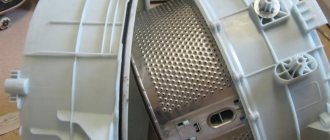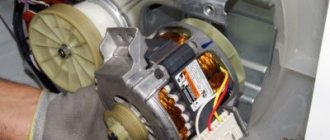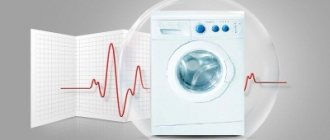The new washing machine was delivered, unpacked, installed in its workplace and connected to the water supply. Do you really want to launch it as soon as possible and see it in action? Experts recommend not to rush, since its performance and durability depend on the first turn on and the initial wash. Haste and incorrect actions of the newly made owner can not only harm, but even destroy an expensive unit. The first start of the washing machine must be carried out in accordance with the manufacturer's recommendations. Therefore, it is important to carefully read the attached instructions.
Checking readiness
Before turning on and starting the washing machine for the first time, it is recommended:
- Read the operating instructions carefully. In this case, special attention should be paid to the section for controlling washing modes. Incorrect user control may affect the performance of the electronic unit of the device.
- Check the connection of the machine hoses: rubber for water supply (fill) and corrugated for draining into the sewer (drain). It is better to secure the corrugated hose, since if water is actively drained from the washing machine, it can fall out and cause a flood.
- Check the rear wall of the device for the presence of transport bolts. They secure the internal parts of the machine and the drum for safety during tilting and transportation. If the bolts are in place, they must be removed and the holes closed with rubber covers, which are usually included with the machine. In most cases, the manufacturer provides 4 shipping bolts.
- Open the water shut-off valve on the inlet hose.
- Check to see if any remaining adhesive tape used to secure the parts has been removed from the front, back and side walls of the machine.
- Open and inspect the drum of the washing machine to see if there is any debris or any parts in it.
These are mandatory steps that must be carried out before starting the washing machine for the first time.
Features of cleaning from scale, plaque and rust
Over time, clothes after washing no longer seem as clean as when buying a new washing machine. This is due to the fact that dirt, pieces of material, scale and other debris accumulate on the surface and inside the device. Scale and dirt must be removed at least once every three months. If you wash items made of wool or keep pets, then it is imperative to clean the washing machine from dirt inside.
If cracks and scratches appear on the surface of the machine, rust may appear. It can then spread and cause significant damage. It must be cleaned by mechanical means, and if necessary, the surface must be painted to protect it from its spread. It is not advisable to wash in such a machine.
First wash
Manufacturers of washing machines and experts recommend doing the first wash in vain - without adding laundry and staying near the machine the entire time of washing.
Instructions for starting the startup launch:
- Turn on the power supply to the device.
- Close the loading hatch until you hear a characteristic click.
- Add a special detergent for the washing machine for the first start or regular powder into the compartment for powder and conditioner.
- On the control panel, select the “Cotton 60°” mode, start it and wait until the end of the wash.
- Listen to the noise of the machine during operation, its rhythmic hum and whether there are any grinding or knocking sounds.
- When you touch the operating device, there should be no vibration or shaking (if it is correctly installed in level, even during the spin cycle the machine should not move from its place).
- Inspect the machine after completing the first wash. You should check the sewer and water hoses to see if there are any leaks or water leaks under and around the machine.
Useful tips for starting a washing machine
We offer you some useful recommendations that will help you understand the operation of the washing machine after purchasing it:
- When you start the machine for the first time and notice that it rumbles, rattles and makes strange sounds, do not do anything yourself. You are entitled to free equipment repairs at a service center using a warranty card. In such a situation, call service and explain the problem. A technician will come to you and fix your equipment or take it for repairs.
- Wipe the washing machine body regularly. Use products that do not contain chlorine.
- Do not forget to remove moisture and remaining dirt after washing under the rubber seal.
- Use special products for machine washing. Do not use hand washing powders. This threatens not only with the dirt not being washed off, but also with the machine breaking down.
- Do not overload the machine with laundry, as this will cause the parts to wear out quickly due to the imbalance of the drum.
- Try to clean the drain filter of various small blockages as often as possible.
- Before loading items into the drum, be sure to check the pockets for foreign objects.
- After finishing washing, do not close the door - the machine must be ventilated. If ventilation is not done, this will lead to the formation of mold, fungal infections and the appearance of an unpleasant pungent odor.
- Carry out prevention. To remove scale from the heating element, it is recommended to use special products, citric acid, soda or vinegar.
These simple rules will help you cope with any difficulties. Proper operation and regular maintenance of the SM is a guarantee of stable, proper and high-quality operation. Things will be clean and fresh, and the machine will last a long time.
What should you pay special attention to?
The first launch of washing machines from LG, Bosch, Candy, Indesit, Hotpoint Ariston, Samsung, Haier, Vestel, Beko and devices from other manufacturers is practically no different.
In all cases of violation of the normal operating mode and washing, you should call a specialist or look for the cause of the malfunction yourself.
If, when starting the washing machine for the first time, the user notices knocking, grinding or other strange sounds, without delay, you should call a specialist from a repair shop or service center. You cannot wash until the problem is fixed, even if the problem does not seem serious.
Recommendations for the first wash without laundry are based on the fact that most of the surfaces of the drum and drains are most often contaminated with technical liquids and oils, the use of which is necessary during assembly at the manufacturer. In addition, these same parts can retain unpleasant odors for a long time. The main thing, with such an idle wash, is to check whether the parts and components of the new machine are working properly, whether the water supply and drainage system is sealed.
Features of cleaning from dirt and odor
The appearance of dirt and unpleasant odor in the washing machine can transfer it to clothes. To get rid of them, you must first find out the reason for their appearance. For cleaning, it is most often recommended to turn on the washing mode with soaking at a temperature of 90 degrees. Filters, valves and outlet pipes must be thoroughly cleaned of stagnation and debris.
It is also worth monitoring the cleanliness of such parts as the rubber cuff, the ditch for filling detergents, the drum, and the hatch door. A musty smell often appears when the hatch is always closed. Particles of material and thread accumulate in the compartments and begin to rot.
Regular dirt can be easily removed at home using cleansers, the same powder, bleach, dish soap or simple soda. Old smells are more difficult to remove, but even in this case, baking soda or, for example, citric acid can help.
First wash products
Specialized household appliance stores offer an inexpensive solution for starting up a washing machine for the first time. It contains active surface substances that destroy all technical odors, dirt and impurities. After using this product, a pleasant smell remains in the washing drum for a long time. This product is added to the powder container during the first wash.
Features of cleaning from mold and mildew
Mold and mildew in an automatic machine is formed when there is a regular humid environment and when powder residues accumulate inside. Fungal spores can cause allergic reactions and other diseases in humans. It is worth noting that it is necessary to eliminate not only the mold itself, but also the causes of its occurrence.
You can clean the washing machine from fungus using such means as:
- lemon acid;
- hydrogen peroxide;
- white;
- washing powder or dish soap;
- vinegar;
- copper sulfate;
- soda, etc.
It is much more difficult to remove mold from the inside of a car than from the outside. This will require additional washing at high temperatures and with the addition of fungus-killing agents.
Tips for proper washing
To make your washing machine last a long time, you need to listen to simple tips:
- do not overload the machine with excess laundry;
- separate white laundry from colored laundry and do not wash them together;
- check the pockets of loaded items, especially for metal objects;
- To soften water, use water softeners and conditioners when washing;
- clean the drain hose filter from small debris;
- Wipe the machine panel and drum door with special substances that do not contain chlorine or abrasives.
Recommendations for the first launch of a washing machine from Bosch, Candy, LG, Indesit, Hotpoint Ariston, Samsung, Haier, Vestel, Beko and other companies, as well as their further operation, are practically no different. Following these simple recommendations will help maintain the longevity of your household appliances without repairs.
Preventing machine contamination
A washing machine is a modern, indispensable piece of equipment for any family. For long-term use, it is enough to follow the available preventive measures:
- Do not leave the door closed.
- Put away laundry immediately after washing.
- Do not store dirty items in the washing machine.
- Keep the drum clean and dry.
- Use the correct dosage of products.
- Run periodically washing at high temperatures.
- Check the tank, cuff, tray and parts for mold.
- Once a month, run a wash cycle using citric acid.
- Monitor filters and valves to ensure they do not become clogged.
- Do not overload the drum with laundry.
If you hear extraneous noise or grinding noises while washing clothes, the water does not drain or, on the contrary, fills slowly, or there is a foreign smell, it is better to stop the washing and check it thoroughly for blockages. If you detect a problem in time, you can quickly solve it without resorting to repairs.
Where to pour the powder
The detergent container usually has three compartments. The smallest of them is marked with an asterisk or flower. Rinse aid or conditioner is placed in it. The other two are often marked with the numbers I or II and less often with the letters A and B. The first (I or A) is filled with powder in those modes that provide for preliminary washing. The main wash powder is placed in compartment II or B.
Advice
: if the purchased washing machine does not have markings and instructions, then in order to determine where to pour the powder, you need to run the machine for a quick wash and see which compartment the water begins to flow into. This is the main compartment.
It is recommended to pour the thick gel directly into the drum to protect the tray and pipes from blockages.
Mode selection
The first start of the washing machine should be without laundry. This is explained by the fact that lubricants, which are abundantly supplied to household appliances for transportation, could remain on some parts inside. In order not to stain or spoil the laundry, it is better to do a dry run for the first time.
- The loading hatch closes. A small amount of powder marked for automatic washing is added to the tray.
- Then the machine is connected to a 220V power supply.
- The short wash program is selected and started according to the instructions - usually by pressing the “Start” button.
- You need to wait until the end of the idle wash to make sure that there are no smudges anywhere. Wait until the hatch door is ready to open (it does not open immediately for safety reasons).
